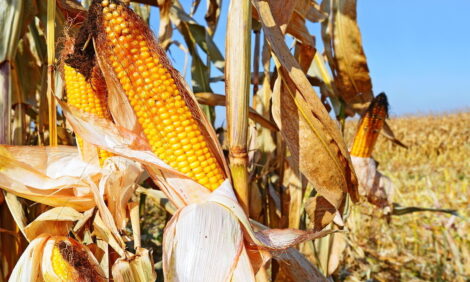



Australian Outlook: Global Beef Demand
One of the major negatives to loom over the Australian beef industry in 2012, if not the largest, is the continued economic malaise which has plagued advanced economies in recent years, writes Meat and Livestock Australia. With expenditure on beef closely tied to income and consumer sentiment in advanced markets, the massive uncertainty will again have a major role to play in the global protein and beef markets for 2012.
With this negative comes the possibility of a volatile A$, which can also cause major issues for beef demand. The rise of the A$ throughout 2011, up 12% on 2010 to average 103US¢, acted as a major handbrake upon the viability of Australia’s beef exports.
There is the added concern that, with the continued uncertainty in financial markets, credit may once again dry up, dragging major global economies back into recession. In 2008, a lack of credit was one of the major reasons behind the decline in beef prices (and eventually cattle prices in 2009) in the wake of the Global Financial Crisis, with many major beef buyers unable to access full credit to purchase product. A similar situation in 2012 would again constrain demand for beef, and most likely be felt right through to cattle prices – both in Australia and globally.
With the very difficult economic situation in advanced economies, particularly Japan, the US, and Europe, the ability to achieve higher prices for high quality beef globally has been compromised, Consumers in these comparatively wealthy regions are favouring a shift towards lower priced beef and other proteins. As such, one of the results of the past three years of economic uncertainty has been a significant shift in demand (and prices) globally towards lower quality frozen beef. Chilled beef, normally higher priced and favoured in advanced economies, has been more difficult to move.
With the global market putting a “premium” on lower quality frozen beef (mainly sold through fast food and foodservice outlets), competition has increased substantially between advanced economies and developing or emerging markets for this product. Manufacturing beef has been a very sought after commodity to almost all major imported beef markets since 2008, including Japan, the US, Russia and the Middle East. As a result, price increases have been occurring for manufacturing beef at a much faster rate than for other beef products, especially higher quality cuts.
With many global economic forecasting agencies predicting another tough and volatile year in 2012, the demand for manufacturing beef is forecast to remain strong across all markets. The ability to pay more for product, and thus attract the commodity, will largely hinge upon the economic conditions within each market, their own protein requirements and relative currency movements.
According to the latest World Economic Outlook from the International Monetary Fund (IMF) in September 2011, the economic growth prospects for 2012 are skewed towards developing and emerging markets, such as China, India, the Middle East and Brazil. Globally, the IMF forecast world economic output to expand at 4% in 2012, steady with 2011, but down from the 5.1% recorded in 2010. In the wake of the GFC, output in 2009 fell 0.7% globally, with advanced economies retreating 3.7%.
Economic Growth for Key Countries

For the major advanced economies in 2012, the outlook is positive, but certainly not strongly so. Marred by high unemployment, massive debts and consumer uncertainty, growth in the US for 2012 is tipped to reach 1.8%, up from 1.5% in 2011.
For Japan, economic growth is forecast at 2.3% in 2012, up from -0.5% in 2011. However, it should be remembered that the negative growth in Japan for 2011 was largely due to the natural disaster that hit the country in March and the subsequent impact of the nuclear disaster.
One of the largest drags on the global economy for 2012 is expected to be the ongoing debt issues in the European Union (EU), with many countries implementing austerity measures. The situation in Europe has the potential to significantly impact growth prospects in other economies, even dragging them back into recession. In 2012, the IMF has forecast the EU to register economic growth at 1.1% – the worst economic performance since the recession of 2009 (-4.3%).
For many Asian nations, including Korea, Taiwan and South East Asia, growth prospects are positive for 2012. Korea is tipped to expand at 4.4% in 2012, and Taiwan at 5%. As a region, the ASEAN-5 nations (Indonesia, Thailand, Malaysia, Philippines and Vietnam) are forecast to expand at 5.6% in 2012, up from 5.3% in 2011. The key driver of this growth will be Indonesia at 6.3%, with Malaysia at 5.1% for 2012.
As has been the case for the past decade, China’s growth has been outpacing almost all other nations, with 2012 set to continue the trend. For 2012, China’s economic output growth is forecast to be 9%, down from 9.5% in 2011, but still well above any other major economy. The only other nation to come close to China in 2012 is India, forecast to expand at 7.5% in 2012.
With the relatively positive outlook for China and South East Asia, the Australian economy is forecast to expand at 3.3% in 2012, up from 1.8% in 2011.
For other major global economies, growth in 2012 is expected to remain positive, with Brazil predicted to record growth of 3.6%, the Middle East also 3.6% and the Commonwealth of Independent States (which includes Russia) 4.4%.
February 2012


